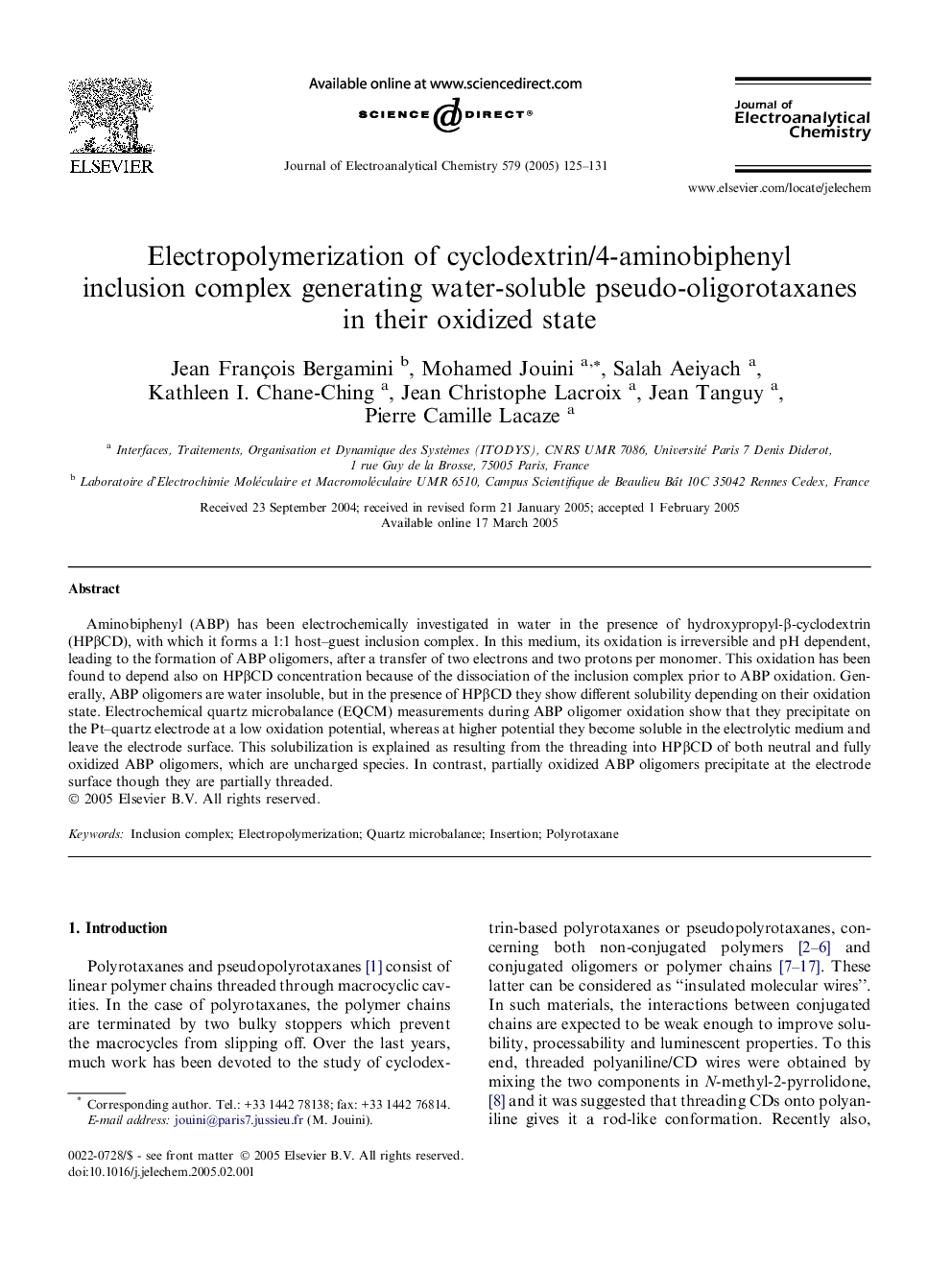| Article ID | Journal | Published Year | Pages | File Type |
|---|---|---|---|---|
| 10275908 | Journal of Electroanalytical Chemistry | 2005 | 7 Pages |
Abstract
Aminobiphenyl (ABP) has been electrochemically investigated in water in the presence of hydroxypropyl-β-cyclodextrin (HPβCD), with which it forms a 1:1 host-guest inclusion complex. In this medium, its oxidation is irreversible and pH dependent, leading to the formation of ABP oligomers, after a transfer of two electrons and two protons per monomer. This oxidation has been found to depend also on HPβCD concentration because of the dissociation of the inclusion complex prior to ABP oxidation. Generally, ABP oligomers are water insoluble, but in the presence of HPβCD they show different solubility depending on their oxidation state. Electrochemical quartz microbalance (EQCM) measurements during ABP oligomer oxidation show that they precipitate on the Pt-quartz electrode at a low oxidation potential, whereas at higher potential they become soluble in the electrolytic medium and leave the electrode surface. This solubilization is explained as resulting from the threading into HPβCD of both neutral and fully oxidized ABP oligomers, which are uncharged species. In contrast, partially oxidized ABP oligomers precipitate at the electrode surface though they are partially threaded.
Related Topics
Physical Sciences and Engineering
Chemical Engineering
Chemical Engineering (General)
Authors
Jean François Bergamini, Mohamed Jouini, Salah Aeiyach, Kathleen I. Chane-Ching, Jean Christophe Lacroix, Jean Tanguy, Pierre Camille Lacaze,
